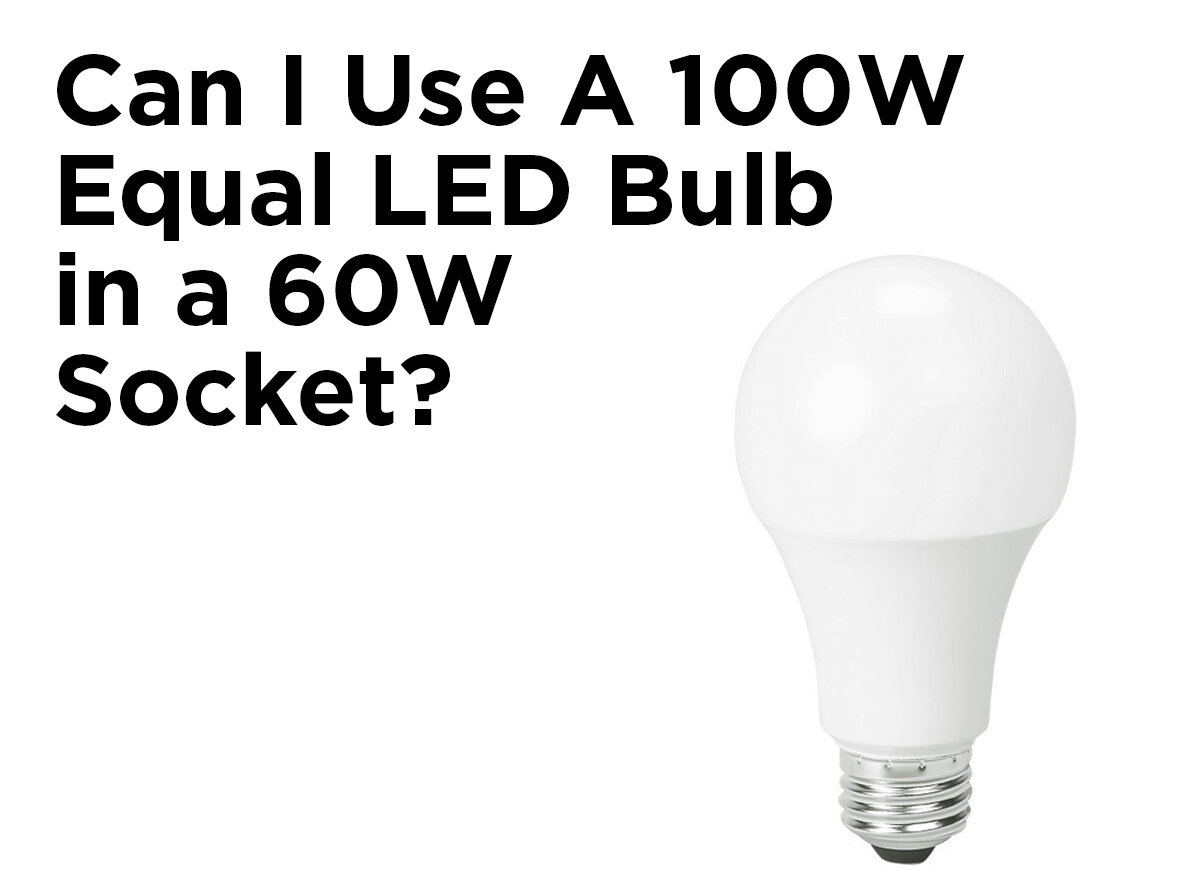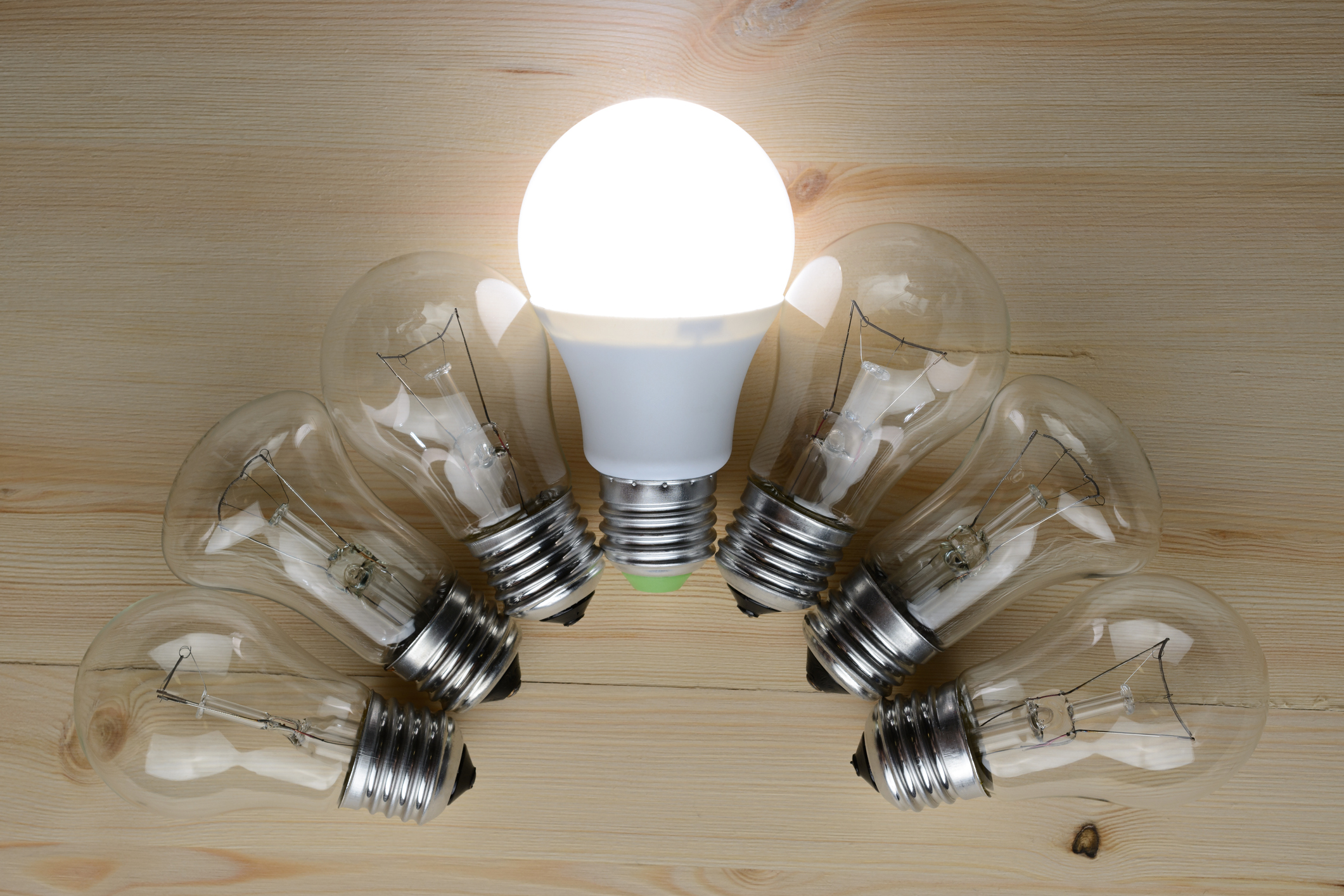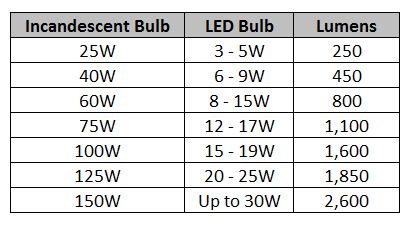The LED Wattage Guide: Can I Use a 100W Equal LED Bulb in a 60W Socket?
Updated September 2025 by 1000Bulbs Lighting Experts
Picture this: you're standing in the lighting aisle, holding a bright 100W equivalent LED bulb, staring at your home's 60W-rated fixtures and wondering if you're about to create a fire hazard. You're not alone—this is one of the most common questions our lighting experts field every day at 1000Bulbs.
The confusion is understandable. For decades, we've been trained to think "higher wattage equals danger" when it comes to light bulbs. But LED technology has completely rewritten the rules of residential and commercial lighting, and many people haven't gotten the memo yet.
Here's the short answer that might surprise you: Yes, you can safely use a 100W equivalent LED bulb in a 60W-rated socket. But there's more to this story than just a simple yes or no.
In this comprehensive guide, we'll break down everything you need to know about LED wattage equivalents, explain why the old wattage rules no longer apply, and show you how to choose the right LED brightness for every space in your home or business. Whether you're a homeowner looking to upgrade a few table lamps or a facility manager planning a complete LED retrofit, understanding these principles will save you money, improve your lighting quality, and keep you safe.
Ready to discover why LED technology makes it possible to get more light while using less power? Let's illuminate the facts.
The Benefits of LED Lighting
Are you considering replacing your incandescent light bulbs with LED light bulbs? LEDs are increasingly popular and have many advantages over traditional bulbs, including their adjustable color temperature and energy efficiency. LED lighting is environmentally friendly and can significantly reduce energy consumption and lower electricity bills.
LED bulbs also appeal to many because of their adjustability. Many bulbs have dimming capabilities and are compatible with dimmer switches, enabling you to adjust your lighting easily.
Smart bulbs allow further customization and can be controlled via Bluetooth or Wi-Fi, providing dimming capabilities, color changes on demand, energy monitoring features, and even scheduling features that can synchronize with other smart devices within your home.
Modern LED Advantages in 2025
Today's LED technology has advanced significantly beyond basic energy savings. Current LED innovations include:
Color temperature adjustment from warm 2700K to cool daylight 6500K
Motion sensors built directly into bulbs for security and convenience
Extended lifespans now reaching 50,000+ hours for premium models
Instant brightness with no warm-up time required
Temperature tolerance allowing operation in extreme conditions from -20°F to 120°F
Can I use an LED Bulb with a Different Rating?
When replacing incandescent bulbs with LED light bulbs, it can be tricky to determine which bulb is the optimal choice, especially when it comes to wattage equivalents and brightness. One often-asked question is: “Can I use an LED light bulb with a higher wattage equivalent than the incandescent bulb I am replacing? For example, can I use a 100-Watt equal LED light bulb in a 60-Watt rated socket, to get more light from my fixture?”
The short answer is yes—as long as the light bulb consumes fewer watts than the wattage for which the fixture is rated.
Common LED Wattage Equivalent Examples
Here's what you can safely use in different socket ratings:
| Socket Rating | Safe LED Options | Actual Draw Power |
|---|---|---|
| 60W Socket | Up to 100W equivalent LED | 8-15W actual |
| 75W Socket | Up to 150W equivalent LED | 12-22W actual |
| 100W Socket | Up to 200W equivalent LED | 18-35W actual |
Understanding Wattage Ratings and Their Impact on Safety
The wattage rating on lighting fixtures such as ceiling fans, lamps, or general overhead lights exists for safety reasons. Ensuring bulbs draw less wattage than the lighting fixture can handle helps prevent light bulbs from causing damage. Incandescent bulbs in particular are known for overheating, which can increase the risk of fire or even cause the bulb to shatter in extreme cases.
Unlike incandescent bulbs, LEDs are specially designed to convert more energy into visible light rather than heat, making them more energy efficient. The term “60-Watt equal” has little to do with a direct wattage correlation. Instead, a 60W equal LED bulb may consume as little as 8 watts to generate light output. It simply means that an eight-watt LED light bulb can produce the same amount of light as a 60-Watt incandescent bulb.
Heat Generation Comparison: LED vs Incandescent
Understanding the dramatic difference in heat output helps explain why LEDs are safer:
100W Incandescent: Generates approximately 85W of heat (85% of total energy)
100W Equivalent LED: Generates only 2-5W of heat (15-25% of total energy)
Temperature difference: LED bulbs run 50-80°F cooler than incandescent equivalents
This reduced heat generation means:
Lower fire risk in enclosed fixtures
Reduced air conditioning costs in summer
Longer fixture lifespan due to less thermal stress
Look at Lumens Rather than Wattage for LED Light Bulbs
Generally, incandescent light bulbs with a higher wattage produce a brighter light. With energy-efficient LED light bulbs (which use very little power), you should be paying attention to lumens instead.
Lumens are a direct measurement of how bright a light bulb shines, whereas watts are a measurement of the power requirements of a bulb. An LED light bulb that delivers 800 lm produces the same amount of visible light as a standard 60-Watt incandescent bulb. The chart below shows the average amount of lumens for a traditional incandescent bulb.
The bottom line? An LED bulb uses up to 90 percent less energy than its incandescent equivalent while producing the same lumen output. This means that if your fixture is rated to accept 60 Watts, you can safely use 75W, 100W, or 125W equal LED bulbs. Even a 125W equal LED bulb draws less than 50 Watts of power. Since you get a higher lumen output from LED bulbs, you can enhance visibility and light up larger spaces with fewer bulbs.
When considering 100W and 125W equal LED light bulbs, ensure they are compatible with the sockets of your fixture, as they are typically made in a slightly larger A21 size rather than the A19 size of most household sockets. Additionally, be sure that you really want the intense brightness they provide!
Choosing the Right Brightness Level
Beyond just safety, selecting the appropriate lumen output improves both comfort and energy efficiency:
Living Spaces:
General ambient lighting: 1,500-3,000 lumens total
Task lighting (reading): 1,000-2,000 lumens
Accent lighting: 200-500 lumens per fixture
Work Areas:
Home office: 3,000-6,000 lumens total
Kitchen countertops: 700-1,300 lumens per linear foot
Workshop/garage: 4,000-8,000 lumens total
Bedrooms:
General lighting: 2,000-4,000 lumens total
Bedside reading: 400-800 lumens per lamp
Common Installation Considerations
Dimmer Switch Compatibility
Not all LED bulbs work with existing dimmer switches. For optimal performance:
Check packaging for "dimmable" designation
Upgrade older dimmers to LED-compatible models
Avoid mixing dimmable and non-dimmable LEDs on same circuit
Test gradually - some combinations may cause flickering or buzzing
Fixture Type Considerations
Enclosed Fixtures: Some LED bulbs aren't rated for fully enclosed fixtures due to heat buildup. Look for "enclosed fixture rated" on packaging.
Recessed Cans: Ensure proper clearance - some high-wattage equivalent LEDs are larger than standard bulbs.
Outdoor Fixtures: Verify IP rating for weather resistance, especially for security and landscape lighting.
Smart LED Integration Tips
When upgrading to smart LEDs:
Check hub compatibility (Alexa, Google Home, Apple HomeKit)
Consider mesh networking for large homes
Plan for standby power - smart bulbs use 1-3W when "off"
Group by function rather than location for better control
Contact Us Today for Help Upgrading to LED Bulbs
Have any lingering questions or comments about the difference in light quality between LED bulbs and traditional incandescent light bulbs? Whether you're planning a simple residential upgrade or a complex commercial retrofit, our US-based lighting experts can help you calculate the right lumen output, ensure fixture compatibility, and maximize your energy savings. Just call 1-800-624-4488 or try our convenient “pop-up chat feature” at the bottom right corner of our 1000bulb web pages.
Frequently Asked Questions
Can I use a 150W equivalent LED in a 100W fixture?
Yes, if the LED's actual wattage (typically 20-25W) is below the fixture's 100W rating.
Why do some LEDs flicker with my dimmer switch?
This usually indicates incompatible dimmer technology. LED-compatible dimmers solve most flickering issues.
Will higher wattage equivalent LEDs significantly increase my electric bill?
No - a 100W equivalent LED typically uses only 10-15W compared to 100W for incandescent, resulting in lower bills.
How long do LED bulbs really last?
Quality LEDs typically last 15,000-50,000 hours compared to 1,000 hours for incandescent bulbs.
Can I mix different LED brands in the same fixture?
Yes, but for uniform appearance, try to match color temperature (measured in Kelvin) across bulbs.











